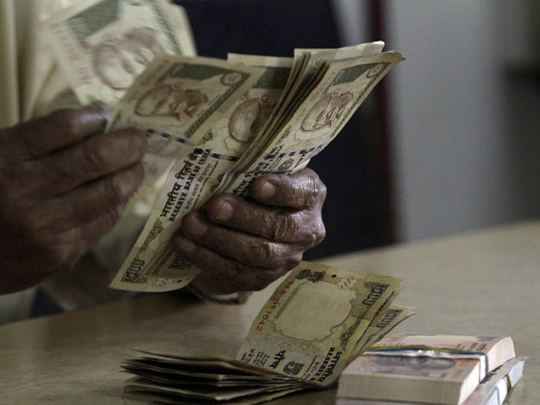
Dubai: Global remittance flows to developing nations are expected to grow eight per cent to $351 billion (Dh1.28 trillion) in 2011, compared to over $325 billion in 2010, the World Bank said in its latest report issued yesterday.
India remained the highest recipient of remittances with $58 billion, closely followed by China with $57 billion, Mexico with $24 billion and the Philippines with $23 billion.
Other large recipients include Pakistan, Bangladesh, Nigeria, Vietnam, Egypt and Leban-on.
World Bank data shows China is fast catching up with India.
Sudhir Kumar Shetty, chief operating officer of the UAE Exchange Centre, said: "A large number of Chinese expatriates are spreading out in various parts of the world and being absorbed in job markets — along with Chinese investment across the world. This has helped China to come closer to India.
"However, a weakening of the Indian rupee and more domestic investment opportunities and a higher return on investment — be it stocks, bonds or mutual funds — will continue to boost remittance flows to India.
China-India race
"I see a neck-and-neck situation or China overtaking India sometime in the future. It all depends on how these factors change in the next few years."
Worldwide, recorded remittance flows, including flows to high-income countries, are estimated to have reached $406 billion in 2011.
For the first time since the global financial crisis, remittances to all six developing regions rose in 2011, the World Bank said.
"Growth of remittances in 2011 exceeded our earlier expectations in four regions, especially in Europe and Central Asia [due to higher outward flows from Russia that benefited from high oil prices] and Sub-Saharan Africa [due to strong south-south flows and weaker currencies in some countries that attracted larger remittances]," the World Bank report said.
Remittances to four of the six World Bank-designated developing regions grew faster than expected — by 11 per cent to Eastern Europe and Central Asia, 10.1 per cent to South Asia, 7.6 per cent to East Asia and Pacific and 7.4 per cent to Sub-Saharan Africa - despite the difficult economic conditions in Europe and other destinations of African migrants.
"Despite the global economic crisis that has impacted private capital flows, remittance flows to developing countries have remained resilient, posting an estimated growth of eight per cent in 2011," said Hans Timmer, director of the bank's Development Prospects Group.
"Remittance flows to all developing regions have grown this year, for the first time since the financial crisis," he added.
The World Bank expects continued growth in remittances going forward — by 7.3 per cent in 2012, 7.9 per cent in 2013 and 8.4 per cent in 2014.
By contrast, growth in remittances to Latin America and the Caribbean were lower than previously expected, due to continuing weakness in the US economy and Spain.
Following this rebound in 2011, the growth of remittances to developing countries are expected to continue at a rate of 7-8 per cent annually to $441 billion by 2014.
Worldwide remittances, including those to high-income countries, are expected to exceed $515 billion by 2014.
"However, there are serious downside risks to this outlook. Persistent unemployment in Europe and the US is affecting employment prospects of existing migrants and hardening political attitudes towards new immigration. Volatile exchange rates and uncertainty about the direction of oil prices also present further risks to the outlook for remittances," the report said.
Boost likely
Remittances would receive a further boost if the global development community achieves the agreed objective of reducing global average remittance costs by five percentage points in five years (the ‘5 by 5' objective of the G8 and the G20).
Remittance costs have fallen steadily, from 8.8 per cent in 2008 to 7.3 per cent in the third quarter of 2011, due to increasing competition in large volume remittance corridors such as UK-Nigeria and UAE-India.
However, remittance costs continue to remain high, especially in Africa and in small nations where remittances provide a life line to the poor.
"In addition to streamlining regulations governing remittance service providers, there is a pressing need to improve data on the remittance market size at the national and bilateral corridor level," said Dilip Ratha, Manager of the Bank's Migration and Remittances Unit and a co-author of the Migration and Development Brief.
"That will stimulate market competition and also help in more accurate monitoring of progress towards the ‘5 by 5' objective."












